Introduction
The gut-brain-immune connection has become a popular topic in recent years. 🦠 🧠
But did you know that your heart also plays a huge part in this communication network? ❤️
Our latest Goodness Lover podcast episode dives deep into the pivotal role your heart plays into the gut-brain-immune connection, and how the vagus nerve brings it all together.
This week, we sat down with naturopathic physician Dr. Catherine Clinton to talk all about the heart, brain, gut, how it's all connected via the vagus nerve, and so much more!
Watch the Interview:
Dr. Clinton explained:
💔 How small and large traumas impact our biology and physiology
🧠 How the parasympathetic (rest/digest) and sympathetic (fight/flight) nervous systems are connected to heart rate and can help determine how your vagus nerve is acting
👨⚕️ The overall impact the heart has on the vagus nerve and microbiome
🤕 How trauma and stress we experience impact decision making via the vagus nerve
🦠 How resistant starches & omega-3 fatty acids benefit the microbiome, especially after exposure to traumas and stress
💤 Why sleep and circadian rhythm regulation is vital to vagus nerve functioning and the connectedness of the whole body
🌳 How powerful our connection is with our environment
And much more that will teach you about the importance of this connection! 🎙
Additional Resources
To connect with Dr. Catherine Clinton and discover more of her work, you can find her on Instagram and Facebook. You can also visit her website here.Transcript
Sarah: Hello. And welcome back to the Goodness Lover show. Today, we're joined by Dr. Catherine Clinton, who's a naturopathic doctor. Who's here to tell us all about the heart, brain, gut connection and how it's all connected via the vagus nerve. What's really fascinating about this talk is just Dr. Catherine's perspective on health. And I think you'll find it really refreshing, really centering, and I think it may be a missing piece that you might not have known about. So let's get into it.
Sarah: Dr. Catherine Clinton, we are happy to have you here today. We got to know each other a little bit more over at the last couple months with our release of The Gut-Immune Solution. And we so loved what you had to share there. And so we knew we needed a little bit more from you, so we got you on the podcast as well. So thank you so much for joining us today.
Dr. Catherine Clinton: Thank you so much for having me. I absolutely love what you guys are doing. The more we can spread awareness about health, the better. And so I'm just honored to be here today and talk with you guys.
Sarah: Well, we are very excited to dive into the topic of the heart-brain connection, and honestly, it's really not something that we've discussed before in our years of interviewing hundreds of people. It's not a topic that has come up, so we're so excited to learn all about it. And for those listening, we confessed to Catherine before the call that we're like, honest, we don't even know what to ask. So lead us the way, tell us all about it, because it's such a fascinating connection.
Sarah: And I guess we've heard little stories here and there of people getting heart transplants and their personalities maybe changing. So we know that there is some interesting aspects about the heart that we don't quite understand. So we're excited to dive in. So maybe first, though, it'd be great to hear a little bit about you and what got you interested in this fascinating connection?
Dr. Catherine Clinton: Absolutely. Well, I'm a licensed naturopathic physician here in Oregon. And when I was going to medical school, I was diagnosed with ulcerative colitis, which is an autoimmune condition that affects the GI track. I was diagnosed with Hashimoto thyroiditis, Lyme disease, multiple parasitic and bacterial infections in the gut. And it was then when, I was in the perfect place, right? I was in medical school and it was my second year of school, which many have heard about sort of that initiation phase in medical school. So it was very stressful, long hours, and it was kind of the straw that broke the camel's back, so to speak.
And so I just ended up with all of these diagnoses and was really in the right spot to get expert help on how to piece the physical pieces back together with diet and lifestyle, and that was wonderful. And that allowed me to put myself back together and regain some health that I had had before I was diagnosed. And that's really the goal that a lot of people who have chronic illness and disease are looking for, to return to the health they had right before they got sick. But what we don't realize is that health is what got us sick.
So when we piecing things back together, we often recognize that there's something else lacking and that's where I was at. And that's when I started really researching about psychoneuroimmunology, and what our thoughts do to our immune system. And how our thoughts and our immune system and our gut and our heart and our brain, they're all so intimately connected. And they're really connected both internally within ourselves and externally with the environment we live in daily.
So that's when things really started to change. For my health, for my patient's health was not just gaining that physical piece and that physical wellness, but piecing your whole existence back together with the idea of connections in mind. And really being mindful of what we're taking in internally with our thought processes, what our community looks like. And that's when I really started to see how the gut brain immune connection was so powerful and really allowed us as humans, as patients, as mothers, family members, to connect with something much bigger, much more significant than a supplement or a diet, so to speak.
And that is really where I've had the most success with my health, with my family's health, with my patient's health, is really tuned into some of the things we don't normally think about in mainstream medicine. Going beyond that diet and lifestyle, and really looking sort of at the energetic pieces when we're talking about connections. Because like you said, it is so connected the gut, the brain, the heart and the vagus nerve is what connects it all. It's really that master coordinator. And it's fascinating. And so empowering.
Matt: Awesome. Well, that Vagus nerve thing is very interesting, because so many people in our community, who are just like, "Wow, we want to know more about the vagus nerve." So you said it's the master controller, so I'm very curious to know more about that.
Dr. Catherine Clinton: Oh, absolutely. So the vagus nerve is the longest cranial nerve, and it connects so many of our different organs, our heart, our gut, it's connecting so many different things and it's connecting it directly. So when I was in school, we learned about chemical messages, hormones, cytokines, neuropeptides, all these things are chemical that are released to communicate with other organs and tissues in the body.
But what we're talking about with the vagus nerve is direct innervation, direct communication. And so that is something that we've just discovered in the last five, 10 years in research. And it is absolutely phenomenal, because that opens up the door for immediate access into those systems, into the nervous system and the heart and the brain and the gut and into sort of that circuit that it's all running. And it's just really phenomenal, once we start to look at how connected it is. Our heart has a governing, regulatory effect on so many different organs, on so many different tissues in our body, and that's certainly not the way we think of it conventionally and in the mainstream. We think of the heart as the pump, right?
Sarah: Yeah.
Dr. Catherine Clinton: But it actually is the biggest giver and receiver of electromagnetic frequency. And so with all the new quantum biology and the science behind that, that's something that we're just sort of starting to scratch the surface of. And it's absolutely amazing. And so many of us, especially in these last couple years, so many of us have been living under chronic stress, have had traumas. And even these two years aside, there's many of us that have had trauma in a chronic, daily sense in childhood. And that kind of stress really impacts our whole biology. And it goes directly into that vagus nerve. And again, because it's the master connector, it's going to go into the gut and the brain and the immune system. And so, once we can kind of wrap our head around those connections, we can make real profound changes to our health by simply recognizing and tending to those connections. It's really profound.
Matt: Wow.
Sarah: That's really fascinating.
Matt: So. Yeah, I guess, someone listening to this could be like, "Well, yeah, maybe it's..." It hasn't been on their radar and they want to learn and go deeper into how these connections can really impact their health.
Sarah: How does it work, yeah.
Matt: Can you dive us into that? Thanks.
Dr. Catherine Clinton: Absolutely. Absolutely. And so what I'll do is I'll kind of talk about what happens first to get us dysregulated, and then how we can come back, and how this all happens with this circuit, basically, between the brain and the heart and the gut via that vagus nerve highway, so to speak.
So when we're talking about chronic stress or trauma, there are many things that happen to our physiology when we are experiencing that. So when we are under chronic stress or trauma... And so many times we think of capital T, trauma with a capital T, we've lost a parent, or a loved one or these big life changes. But the research clearly shows, and I think intuitively we all know this, is that little traumas impact us as well, and they add up.
So there was a research study about a decade ago about adverse childhood events. And it looked at capital T trauma and lower case T trauma, and it found that it had the same physiological effects. So those bigger traumas that we think of they're having, it's a similar pathway as the little traumas like bullying or driving to work in rush hour with people with road rage, all of these things are adding up, and what are they doing to us? They're significantly deranging our biology.
So when we experience that chronic stress or trauma, we're seeing a shift in our gut microbiome from more beneficial microbes to more harmful microbes. And remember our microbiome is sort of a community of viruses and fungus and bacteria that keep us healthy. So when we're experiencing that trauma, we see a shift from more beneficial species to more harmful species. At the same time as this, we see a decrease in our T regulatory cells.
Now our T regulatory cells, I call them the superheroes of the immune system, because they go around putting out inflammatory fires, autoimmune reactions, allergies, excess inflammation. They go in, they stop the inflammation and clean it up. So they are decreased by chronic stress and trauma.
So we see that immune dysregulation, we see that microbiome derangement. And what we see in the vagus nerve is we see a disconnect, usually, we are wired from our heart and our gut into our frontal lobe. And so the vagus nerve is connected to that frontal lobe, and this allows us to make calm, rational, clear decisions. And when we are under that chronic stress or trauma that is shifted and shunted. And of course all of these things we want in the short-term, so if a bear jumped into the room right now, I would want all those things to happen so that I could run away from the bear. But I'm not supposed to live with a bear, work with a bear, have community with bears.
So our systems are under significant stress. And what we're seeing is that this isn't just a transient change, that neurological wiring can persist for a lifetime. And so when we're talking about the vagus nerve and the innervations to the heart, there's something out there called heart rate variability. And it's something that Olympic athletes are using. It's a really interesting way to measure vitality.
And what it's measuring is, basically, the inputs from the vagus nerve. So the vagus nerve and our nervous system has two branches. So we have that fight or flight sympathetic mode, the bear jumps in the room, we are in our fight or flight. We flood with cortisol and epinephrine and adrenaline. And that's our sympathetic branch of the nervous system. Our other branch of the nervous system is our parasympathetic. That's our rest, you're safe, it's okay to digest.
And so those two branches of the nervous system are contained within the vagus, and heart rate variability is a sneak peek into the resilience of that vagus nerve. So, ideally, what you want is high variability. So when we talk about the heart, we often get very myopic and we talk about pumps and blockages and that kind of stuff, which is true, but there's much more going on.
And when we're talking about heart rate variability and the beating of the heart, it is not a metronome. It is not meant to be static and contained within one beat. It is actually being the heart is innervated by that vagus nerve, so it is being communicated, it's in conversation with your nervous system. So what you should see with your heart rate, variability is high variability, meaning that your sympathetic side is saying, "Oh, Nope, take care of this," and it speeds up. And then your parasympathetic says, "No, that's not a big deal, calm down," and so then it goes back down. And then the sympathetic says, "Well, what about this?" And it's this conversation.
And when we have been stressed, traumatized, had our immune system derange, we can get stuck in that pattern. And that actually becomes a neurological footprint. So when I do heart rate variability with my patients, it's very clear to see it's a very static variability. There's not a lot of variability, and you can elicit certain responses just by talking to someone when you're measuring their heart rate variability.
So that is a really exciting way to get a sneak peek into what your vagus nerve is doing, just by what the heart rate variability is telling you. Because we should be in conversation with all of that, with the vagus nerve, with the heart, the gut microbiome, the brain, all of that is really a messaging system. So those signals are being spread throughout that messaging system. And that's really what it is, it's a messaging system of safety or danger, and it ripples throughout our biology. And when we can start to address that in health, in a doctor's office, the impact is enormous on someone's health.
Matt: That's amazing. I was-
Sarah: So interesting.
Matt: ... geeking out as you're talking about heart rate vulnerability.
Sarah: I'm like, why is Matt smiling?
Matt: I was just like, I've been tracking my WHOOP.
Sarah: Matt wears a WHOOP, which is track... Yeah, all about heart rate variability.
Matt: I have found it so interesting, I've been tracking it for a while, just how simple things like... It can almost predict when you're going to get sick, a lot of the times. It's like, I'm in the red, and then it's in the red not feeling sick. I actually haven't even experienced the symptoms yet, or at times, obviously, from over training or something, where it's just my body is not handling that stress. Or when we release a series, it's very-
Sarah: Matt's readings have not been great lately, to be honest.
Matt: I mean, I know it's just not just the WHOOP that does it, there's plenty of other things that do it. But what have you noticed in your practice of heart rate... specifically, if we dive into that, as to what are some things... because I've even noticed with simple diet things, for example, during the last several months I barely drunk, and then I had one drink one night, and then I was in the red the next day. And it's just so interesting. So I was just curious as to what you've seen, obviously, you maybe have better ways of detecting it and seeing the impacts that this can have. It's huge.
Dr. Catherine Clinton: It is huge. And I love what you brought up about being in the red before you even know it, not having symptoms, and then you get sick. Because from my point of view, it's really a communication network. And so when that communication network work is primed and working and unencumbered, then our symptoms and our immune system, our neurology, our neurological networks, all of it are working at a much higher rate, much cleaner, much more efficient. And this is a bold statement, so I'm not going to say it's true, but I do wonder if our rates of chronic illness and infection, if all of these things aren't driven by a lack of communication or an obstacle in the communication system.
Because a lot of times we think of the immune system as a defense, and I really don't. When you look at heart rate variability and you look at the connections and how it is so connected intimately within our body, but so connected with our environment, I really think that it's pointing to how it's a communication network. And how, when we are feeling ill and succumbing to infections or chronic disease or autoimmune conditions, all of these things are breakdowns in the communication network of the body.
Sarah: So interesting. Before you said that when we experience these traumas or this communication system is broken down, normally, the vagus nerve would, I guess, innervate the frontal lobe, but then you said it can get shunted. This may be too specific a question, but where does it get shunted to? Or is there any more that you could share there?
Dr. Catherine Clinton: Absolutely. Yes. So that frontal lobe is what makes those rational, calm decisions. And when we're in that state of trauma and chronic stress, it gets shifted from the frontal lobe to the more reactionary parts. It's the same thing that happens with our blood. So instead of my blood being in my core and digesting, it's shunted to my muscles so that I can run away. And the fascinating thing about how it is shunted to our dorsal sort of that reptilian dorsal new brain, is that it becomes a highway. It can be an isolated event, physiologically, I think it's supposed to. We're not supposed to be living with these bears or working with them, but it becomes like a canyon. It's a path, and then it becomes a road, and then it becomes a canyon that is really difficult to rewire a different way without attention.
Once you address it, once it's acknowledged, absolutely. It's easy to piece the pieces together and there's lots of resources for that. But without the acknowledgement, it just gets deeper and deeper embedded in our physiology. And there's so many different pieces to it. It's not only just neurological wiring, there's neuropeptides that are stored in our tissues, like we were talking about at the beginning with heart transplants. It gets into some of this structured water intracellularly, and how that reacts with frequencies and different signals. It's just absolutely amazing.
And these things can be detected like we're talking about from heart rate variability devices and different... I use HeartMath. HeartMath is one of my favorites, because I love the end piece of it. I love the heart coherence and some of the guided imagery that they do. And so it is absolutely fundamental to really wrap our heads around that it isn't just a temporary switch, it can become ingrained in our neurology, in our tissues, in our actions, in our epigenetics.
So these changes can be passed down generationally, and that happens through all kinds of different ways. And you stop me if I'm taking too much of left-
Matt: No, no. I'm enjoying it.
Dr. Catherine Clinton: ... turn. But for myself, when I look at my family and my father, and my grandfather's, grandmother's on that side of the family, and I look at my kids, I can see that stress pattern handed down. And what does that mean? Is it just because we lived with those people and picked up their personality traits and ways of coping? No, there's a actual fundamental physiological piece to this. So the way that I react to stress is passed down to my offsprings, and that initial stress response that we talked about with adrenaline and cortisol and epinephrine that happens in response to stress that can be passed down generationally.
And this gets back to, we haven't really gone there and it's sort of a huge topic, but what our DNA is doing, what our environment signals to us as far as safety, as far as danger. And that's really what I've come to boil it down to is really looking at what the inputs are that are in our environment. And we have to remember that this environment that we're in right now is relatively new in our evolution as humans. And, really, I find that taking some steps back to how we have evolved over millennia, can really put the pieces back together to understand why these things are happening. Why do we react to trauma and stress that way? Why would inflammation get so high that we have leaky gut or intestinal permeability from chronic stress or trauma? Why would our body do that?
And I think the answer is, it's not a defensive, protective thing that has failed, it is a networking system that is responding to messages that are in our environment, both internally and externally. And it's phenomenal to see that something as easy as changing your circadian rhythm, that can have a profound impact on your vagus nerve and everything it connects to. It really is a measure of our place in the world and whether we are in our place in the world, or whether we've really walked so far away from it, that our body is just sort of dealing with this chaotic danger signals of toxins and processed food and chronic stress and media barrages, screen time. There's so many things we can talk about that can be those danger signals.
But the other piece of it is, there are just as many or more safety signals that we can put in our environment to regulate that vagus nerve and to get back online, so that we're using that frontal lobe for calm, rational thinking. So that our microbiome is more beneficial than harmful. So that our immune system is balanced, and it has ability to respond and interact with microbes at the same time as putting out excess inflammation. It's such a beautiful, intricate system. I think that we've really narrowed it down to something that is a piece of it, but not the whole of it.
Matt: Wow, there was so much in that section, it was really... Yeah. Thank you so much for sharing. I love that simple metaphor of explaining how the river becomes a little ravine and then a canyon. And even looking at brain scans of people that have anxiety and they're amygdalas are enlarged. So it's just like, in the sense that all that blood getting transferred away from their frontal lobe consistently to those more primitive parts of the brain, and have actually grown it and enlarged those areas, which is really fascinating. So thank you for sharing that.
Matt: So there's this network that's been almost, from what you're saying, is hijacked. And if we don't see it from the symptom perspective of like, I have leaky gut, what's my diet? What's my supplement? What are going, "Okay, let's look at it from the network." So if someone is presenting to you, a patient, and they're just like, "Tell me the diet, tell me the protocol, or tell me the supplement I need to fix these issues or to fix this part." How do you transition that conversation? How do you start shifting the there? Do you start with the protocols, and then you... Is this a later thing? Or are you just like, "Hey, let's hook you up to some electrodes and we're going to fix your field."
Dr. Catherine Clinton: First, I think my first role as a physician is teacher, and so what I like to do is get people excited to learn more and I don't like to hold back something that would make them feel better. So what I usually do is talk over some simple things to get started from. And people are so individual, so of course the list is big. I mean, we can do toxin testing and food allergies and all these kind of things. But on a very basic, first meeting level, what I like to do is talk with people about how this isn't a deficiency of supplements. This isn't a deficiency of electrodes to the machine. This is a deficiency of what we have evolved with over millennia.
And so when we're looking at something like the connection between the gut and the brain and the heart via the vagus nerve, let's talk about some interventions that are easy and effective and kind of open that window up to get people thinking about their biology in a different way. So one of the things I like to talk with my patients about are resistant starches.
So resistant starches are plants that don't get digested in the upper GI tract. They reach the colon undigested and our gut microbiome ferments those resistant starches. Now those resistant starches do so many different things at one time. They help feed the microbiome lining the gut. They help make short chain fatty asses that directly feed the mitochondria, fueling those cells that line the gut, making intestinal permeability much less likely. They also fuel those T regulatory cells, so those superheroes of the immune system, resistant starches boost those numbers.
And I like to stop right here and talk with patients and people about how this is not a discovery of something we never knew about, and resistant starches the latest molecule. What this is, is a connection to the environment that we have evolved with. Our body is searching for these signals of safety. And as humans, we can find those signals so many different places. We can find them in the foods we eat with resistant starches. We can find them with our circadian rhythm, with our sleep. We can find it with grounding with the earth. We can find it with finding safety within our body and the world that we live in, not necessarily the community.
Many of us live in unsafe communities, in unsafe families, but there's a bigger sense of safety out there to be had. There's a bigger sense of community and connection that we were made to connect to as humans, that we have evolved over millennia connected. Our DNA is searching for these safety signals. And once we give those safety signals to our biology, those symptoms that inflammation, those mood issues, all of these things start to resolve, because that's what we're doing. It's this communication network searching for those signals of safety that we have evolved with.
Resistant starches are amazing, not because we've isolated the piece of the starch that doesn't get digested. They're amazing, because they are interwoven with our DNA. They are direct safety signals. Same thing can be said about Omega-3 fatty acids.
One of my favorite studies comes out of the NICU. It's looking at infants that had to be separated from their mothers at birth because of a medical issue. So the researchers knew that that separation would cause trauma. So they looked at those separated infants, their microbiome. They saw that predictable shift from beneficial to more harmful species from that trauma of being separated. And of course they needed to be, for medical reasons, but that trauma was still there. They saw that derangement of the gut microbiome. They supplemented these infants with Omega-3 fatty acids in the breast milk, in the bottles they were using, and they saw complete reversal of that gut microbiome derangement.
All of that derangement over into the harmful species, went back to the beneficial species. And, again, is this because we have isolated these Omega-3 fatty acids? No, it's not. I mean, in a way it is, but in a bigger sense, it's because we evolved around waterways. Our biology, our DNA is searching for that safety signal of, "You are okay. You are in the place you are supposed to be. This is your spot in the greater ecosystem." And we don't have to worry about dealing with all this chaotic, modern life messages that our biology's getting, the toxins and processed food and modern society or community.
And that is something that's just absolutely pivotal for my patients, my family, for myself, and I think for the greater good of humanity, if we all could understand that we are so intimately connected with the environment around us, and it has the ability to harm or heal us. And those things are available to almost anyone. There's so many different supplements and devices and things out there that we can utilize. But on a basic level, reconnecting to the world around us, the way that we have forever, is one of the most powerful things we can do to regulate our physiology.
Matt: So good. I love that-
Sarah: Beautiful.
Matt: ... perspective. It's such a beautiful perspective, because even sometimes we can be like, "Oh, it's butyrate and it's these short chain fatty acids that are doing all these things." We're like, "Let's get more of that." It's like almost we're trying to hack ourselves, where really the reality is, it's like, no, this is return to normal. You would've had a lot of fiber back in the day. So this is not some, nature has [crosstalk]-
Sarah: Fancy new thing.
Matt: Yeah. It's not some fancy thing that we're discovering in nature, got to get into my lower part of my colon right now. Yeah, it's-
Sarah: When really we just need to roll around in some dirt and eat real food. We like to overcomplicate it, don't we?
Dr. Catherine Clinton: We really do. And I think that the more work I do with people around this, the more I see how, like you're saying, we try to hack it. We come up with all these different ways to make ourselves healthier. But there's still this piece, it's almost like we are part of this big puzzle, and our piece is just slightly a skew. You know when you do that, you're doing a puzzle, and it's just not all the way in there, and, boy, is that irritating. It irritates us on a fundamental level.
And when we can find safety in the rhythm of the sun, when we can find safety in the plants around us, when we can find safety in connecting with the world around us, that is so powerful. Because, again, sometimes we're looking to the modern world for safety and that's not being offered. So being able to find that safety in concrete things, in a tree, we can touch, in a grass we can sit in, these things are profound and they put that puzzle piece back.
So that there's this deep, deep sense of relief, deep sense of belonging of, "Oh, okay. I am part of the puzzle now. My piece finally fits." That is where I see the most tremendous healing. And, honestly, I have absolutely zero studies to show this, but I think this is where we make those epigenetic changes. This is where we pass that safety on to our future generations, is that, confidence in the safety and the connections in the world around us.
Matt: Wow.
Sarah: Beautiful.
Matt: It was really beautiful piece. Thank you for sharing that. And I feel like I'm getting like this condensed version of many years of study and many years of wrestling out these things out with patients and seeing results. So thank you so much for sharing that.
Matt: I just want to zoom out a little bit more, because I know you are into this energy aspect of us as well. And just looking at this heart, brain, gut, this thing that's happening, and we know from transplants, people adapt personalities, even weird things like food cravings, strange rituals. And other weird studies out, for example, identical twins, separated birth, and they have the same idiosyncrasies, they've named their kid the same thing. There's these crazy levels of connections. So what is that? I'd love for you to dive into this bigger thesis that you have, I guess, with, is it some form of energetic? It's not just what's happening in our body, but we also connect it to one another. Am I just jumping the gun? Pull me back-
Dr. Catherine Clinton: That is-
Matt: ... if I have.
Dr. Catherine Clinton: No, no, let's go. Let's dive down that rabbit hole, because that's really where we're at. In medicine, we're so focused on the material, on the matter piece, and heart rate variability, what's happening neurologically in our body, how our heart has a regulatory effect over all those organs, it hints to something more. And thank goodness, there's just decades and decades of research around what's happening energetically.
And what we're seeing is that our fascia and our cells, the membranes of our cells, our vessels, our fascia, or connective tissue, all of these things are able to create a dipole battery with the intercellular water within our systems. And so this does many things. That intracellular water goes by many different names. Gerald Pollack is an amazing researcher and scientist who has really put this in the forefront.
And this is by no means new. This has been going on for decades, over a century. And what the research is showing is that this fourth phase of water, this structured water, this EZ zone, there's so many names, extracellular matrix bound water. There's several different names for it, but it's a more viscous water, and it can actually hold charge. And so that is a whole other piece to this. When you're talking about heart transplants and even epigenetics and how these things are pass in an energetic way, this is a huge, huge subject.
But trying to boil it down to a few minutes is, basically, we have this intracellular water that connects directly, like we've been saying, with these signals, with the energy of the sun, our thoughts, music, and, of course, all the material things were so accustomed to thinking about food, toxins, clean air, clean water, or not. All of those things are having an immediate and direct effect on that intracellular water. And we can go really deep on this. This is one of the things that powers our cells. It powers our circulation.
We've been talking a lot about the heart and that little, sweet pumping heart is not physically strong enough to be able to pump through the small capillaries in our feet and our hands and some of those distal parts of our body. So we are relying on some of that potential energy from that dipole battery with that intracellular water.
And what's really fascinating, when we piece that together with what's happening with the vagus nerve, what's happening with these energies, is that there's a real imprint, a real impact. And I mean, we could spend a few good hours really dissecting this and the science and the implications behind it, but basically we have a whole other avenue. We are both energy and matter.
So when we can get patients to wrap their heads around that, when we can get doctors to wrap their heads around that, when we can get healthcare systems to wrap their head around that, that's when we're going to see an amazing turnaround in our health. And just on a simple level, we've seen this directly with our heart coherence studies. And just my energy directly impacts your energy. And we know this intuitively, the people that come in the room that are upset and that energy's just going out, it's like, whew, you almost want to back up.
And that's really back to that polyvagal theory. We are actually hardwired to look at people's facial structures and search for safety or danger. Again, this intricate messaging system. And that sets up a whole cascade of whether we are stuck in that dorsal brain fight or flight, or whether that vagus nerve is innervated our frontal lobe.
It is fascinating and so deep, so deep, so much to cover there. But, basically, energy is contagious. And we know this from personal experience and we absolutely know this from the research and the studies. So if we could really utilize that knowledge, that heart coherence, that my emotions will impact you and your biology and your emotions, if that was something at the forefront of our educational systems, our healthcare systems, our justice systems, what a different world we'd live in.
Sarah: Beautiful. Your perspectives are so refreshing, Dr. Catherine, thanks so much for sharing. So for people that are listening and are really resonating with what you're saying, and they're thinking, okay, it seems like I've been approaching my health in a really reductionistic way, and I'm keen to really, I guess, widen the lens on how I see myself and how I see my health. But I'm still a little bit stuck with how to get started. But I'm feeling you and I want to understand this better. I want to get started.
Sarah: And of course, we've talked a little bit about resistant starches, we talked to a little bit about Omega-3s and just the power of food, good food to bring us that safety and obviously nourish our bodies and get us connected and feeling grounded again. But how else would we approach this? How would you help somebody just to take those first steps with, I guess, reconfiguring how they see their health or just those first steps?
Dr. Catherine Clinton: Absolutely. I think for myself, my family, and my patients, the most profound steps come from connecting with nature. The food is a brilliant piece of it, and it really sets that foundation down. But not many of us eat a meal of resistant starches and Omega-3 fatty acids and leave the table feeling like, whew, connected now, right? And it-
Sarah: Probably a little bit gassy.
Dr. Catherine Clinton: Right.
Matt: Bit of bloat.
Dr. Catherine Clinton: Absolutely. So I really like to talk with people about something that they can feel immediately. And I think that connecting with the solar rhythm and with the Earth is an easy and accessible and an immediate thing we can do. I would challenge everyone out there watching and listening today to try this for four days, and see how your life changes, see how your perspective changes, your energy, your sleep, the energy that you are giving out in that co-regulatory way, it's profound.
So what are these things? Syncing with the solar rhythm, meaning, making sure that you're getting AM sun before 10 o'clock. And what is that doing? That increases our levels of serotonin, dopamine, our growth hormone. It sets us up for that good night's sleep. And how does it do that? Because that serotonin production from that AM light, when the lights are lowered, when the sun goes is down, that turns into melatonin and that helps us sleep.
And of course, melatonin has so many other benefits. It's antimicrobial and all these other things. But just to get in sync with that sun, making sure that we get out and get AM sun, in our eyes before 10:00, making sure that we get some sun in the middle of the day, and making sure that we watch the sun lower, and we lower our lights inside accordingly. So what that does is it sets up this whole rhythm, this cascade of hormones. It is doing a huge overhaul on our mitochondrial health. It is setting us up for lower inflammation, better mood, better health.
And if we compare that with getting in contact with the Earth, there is a sort of unlimited supply of negative ions being released by the Earth. And if we can come in contact with that with our bare feet, with our hands, and it doesn't have to be the bare Earth, it can be a tree, it can be anything of the Earth, connected to the Earth. And when we say sun, I just want to be really clear, I'm here in Oregon, and sometimes we don't see the actual sun for months, and so that is not what I'm talking about. I am talking about outside natural lighting. It doesn't have to be sunny. It doesn't have to be tropical. It doesn't have to be beautiful. It has to be side and it has to be in your eyes.
So your cloudy, dreary days will work perfectly. And what this will do over the course of three or four days, it really resets that biological rhythm. It resets that heart rate variability, which we know is resetting that vagus nerve, which we know is resetting that coordination between the brain and the heart and the gut.
So those two things are free and accessible. And these are things that we can readily put into our lives, get our kids into the mix with as well. And like I said, I would challenge us all listening out there to try something like this, to see how it lowers inflammation, how it increases our energy. And over time a ritual like this, a routine like this not only makes us feel healthier, but it allows us for that deeper connection to something greater, safer, bigger than us.
Sarah: Beautiful. I love that. And everyone knows how good they feel when they go camping, because you are in the rhythm of nature, but everyone just, I guess, assumes it's because they're on holidays that they feel better. But not actually thinking about, what else might be happening when we're communing with nature in that way. I really love that. So yes, we're committing to it. So I hope that those listening can up on the bandwagon as well. And why not? Why not try?
Matt: And you have such a wonderful gift of communicating. I understand now, why we used you in the trailer and things like that. It's just like how you finish sentences. I'm like, that could be a book. So it's glad to hear that you're actually working on a book. I can't actually wait to read it.
Sarah: Yeah.
Dr. Catherine Clinton: Yay. Me too.
Sarah: It's all in the works or top secret right now Matt.
Matt: Oh, is it? Sorry I'm jumping the gun.
Dr. Catherine Clinton: No, no. No, I excited. I am so excited to be able share this, because I think that's what we desperately need. I mean, we are struggling with our physical and mental health, and being able to find safety and connection and vitality in the world around us that's not dependent on things I love, supplements and devices and technology. But finding that core sense of safety and belonging, oh, I just love to share that with people. So thank you so much for letting me.
Sarah: It's been our honor. Thank you so much for sharing. For those of us listening that have Dr. Catherine Clinton fever, where else can we hear more from you or learn more? What have you got out there on the interwebs?
Dr. Catherine Clinton: Absolutely. Well, my social media, Instagram and Facebook, are really just me giving away free information. So I really want us healthier and happier as humans, as an entire planet. So that's out there for free. It's like a masterclass of its own, and I really do series. So I start with a deep dive into things. So there's so much information people can check out there. They can go to my website, drcatherineclinton.com. All my social media handles are Dr. Catherine Clinton, and I'd love to continue the conversation there.
Sarah: Awesome. And so for those that are just listening on audio, that was D-R dot Catherine Clinton, and Catherine is with a C, C-A-T-H-E-R-I-N-E Clinton, also-
Matt: We'll have the links for all that-
Sarah: ... with a C.
Matt: ... in the show notes as well.
Sarah: Yes. Awesome. Well, thank you so much. It's honestly being so refreshing to talk to you today. I think it's just always a nice reminder to, I guess, zoom out a little bit and see ourselves as part of the community that we really are in. Whether it be with people and with the planet and with nature, just to zoom out and realize that our bodies, we're craving that, whether we realize it or not. So I think thank you for bringing that to the fore to us this morning for us, this evening for you. And, yeah, it's been awesome. And I don't normally see Matt just smiling goofily during our [crosstalk]-
Matt: Thanks, babe. Goofily. Pleasantly.
Sarah: I was like, why is Matt smiling? He's like, so into this. Obviously, I am too, but Matt doesn't usually show it on his face. So thank you so much for-
Dr. Catherine Clinton: Yay.
Sarah: ... helping us nerd out today and also centering us today.Dr. Catherine Clinton: Well, thank you so much for having me. I love what you all are doing and just honored to be here.
Matt: That was awesome. I remember we got just off the call and I was like, "I felt like I've been at yoga or something."
Sarah: Felt like we'd just been meditating for a while. And she was like, "Well, I'm sweating, so I'm glad you guys felt good."
Matt: But for us, we're like, Oh, this is so relaxing."
Sarah: So soothing.
Matt: So we'd love to hear if you had a similar... If it had a similar impact on you, please let us know in the comments. We think it's a very, very, very important, obviously, perspective, very powerful perspective. And sometimes it doesn't come down to the sexiest protocol or supplement, it's really just, what she said, connecting us back to how we've always been.
Matt: And so let us know thoughts, feelings in the comments below, we love hearing from our community, and give us a like and a subscribe.
Sarah: Yes.
Matt: We just love getting out free content like this, and helping you guys, connecting with you, and, yeah, we love checking in with our community too. Because we're all in this thing together, and we all need to hear from each other and we're building something here and you're part of it. So make sure you're heard.
Sarah: So also let us know if you're planning on getting some sunshine in your eyeballs before 10:00, let us know if you're committing to that, Matt and I will be on our end. But this is actually our last podcast for the year. So thank you so much for going on this journey with us. It's been our honor to host you and to host our wonderful guests. And so we look forward to seeing you in 2022, have a wonderful holiday season wherever you are, and please keep in touch on Instagram and via email and all the things. So thank you so much for joining us and we'll see you next year.




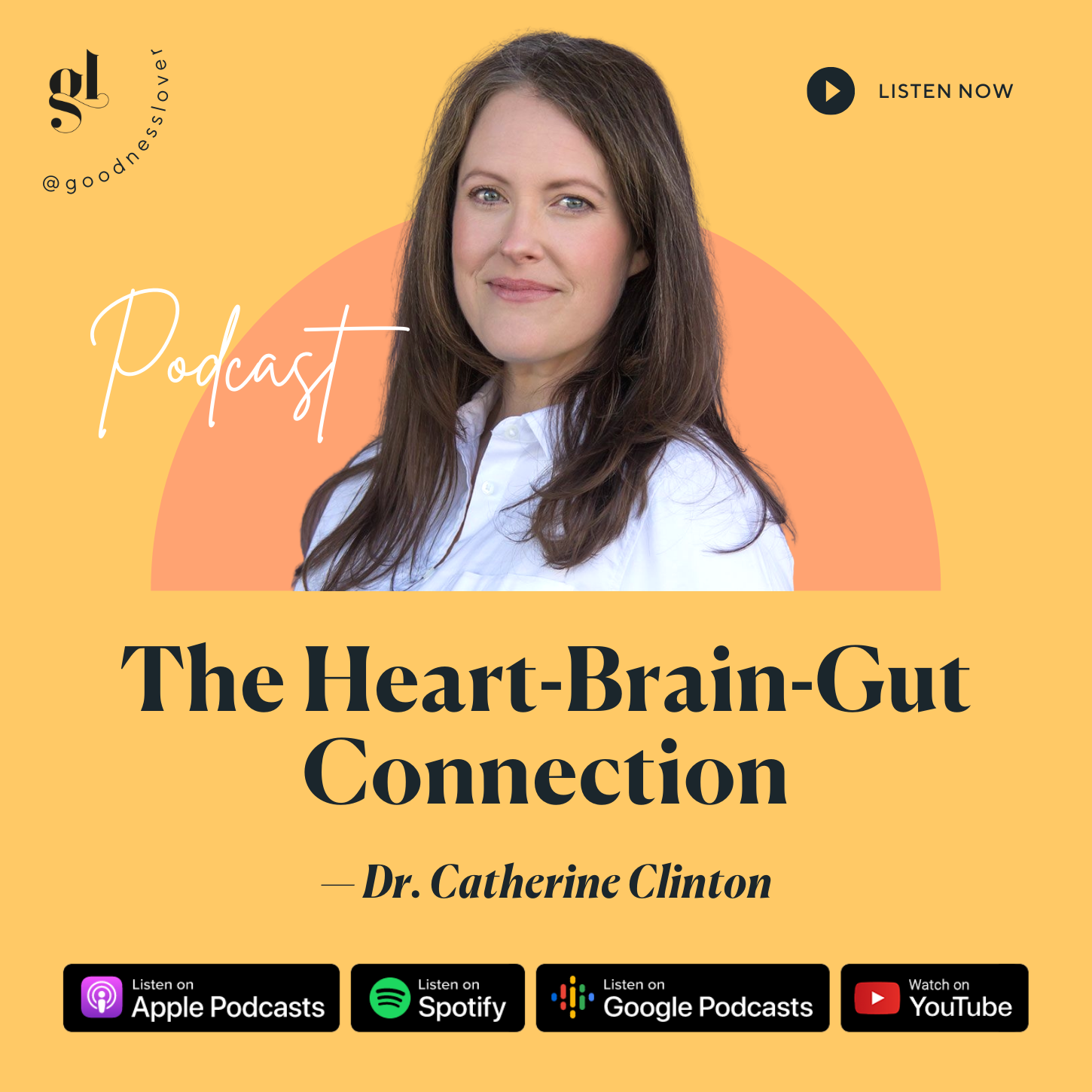




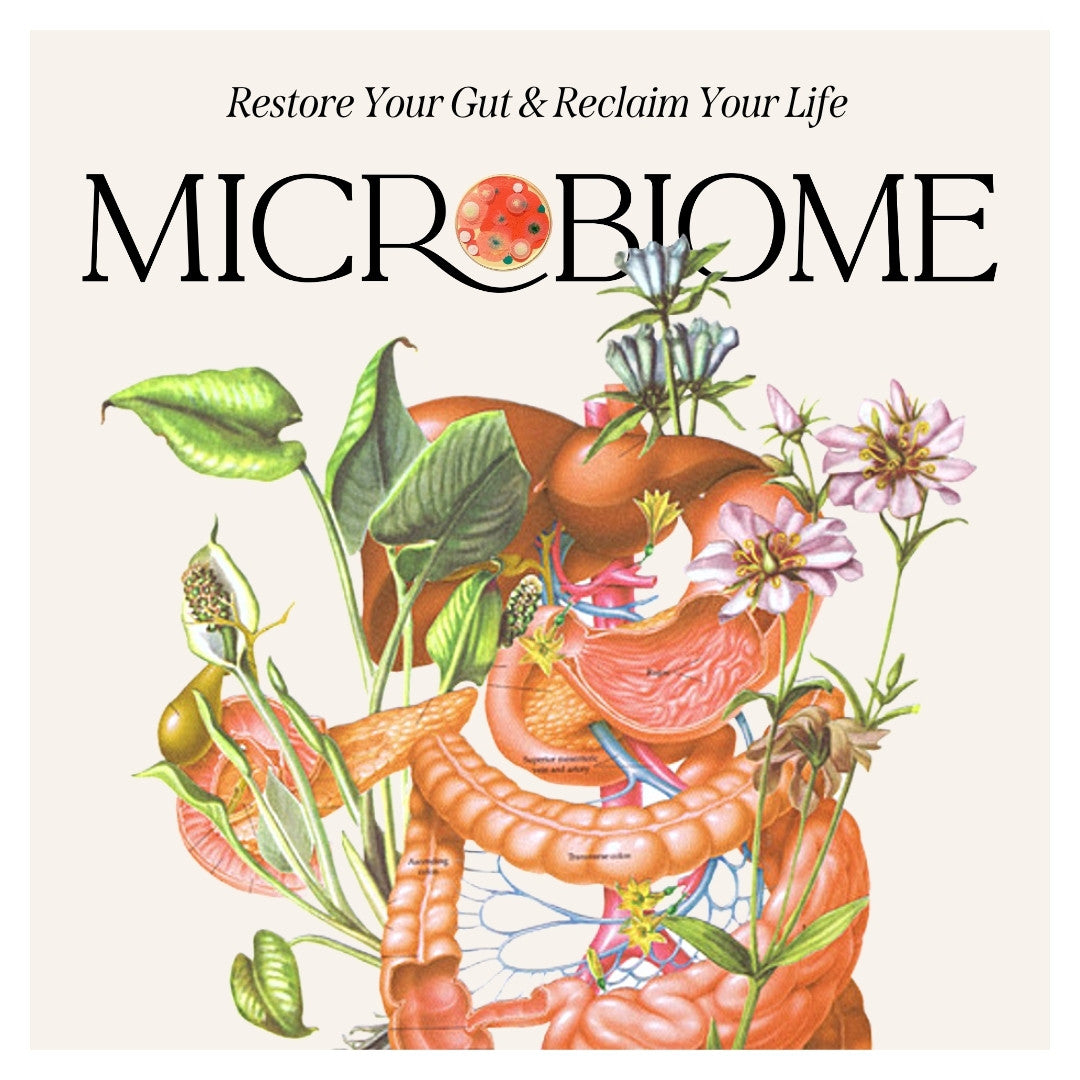

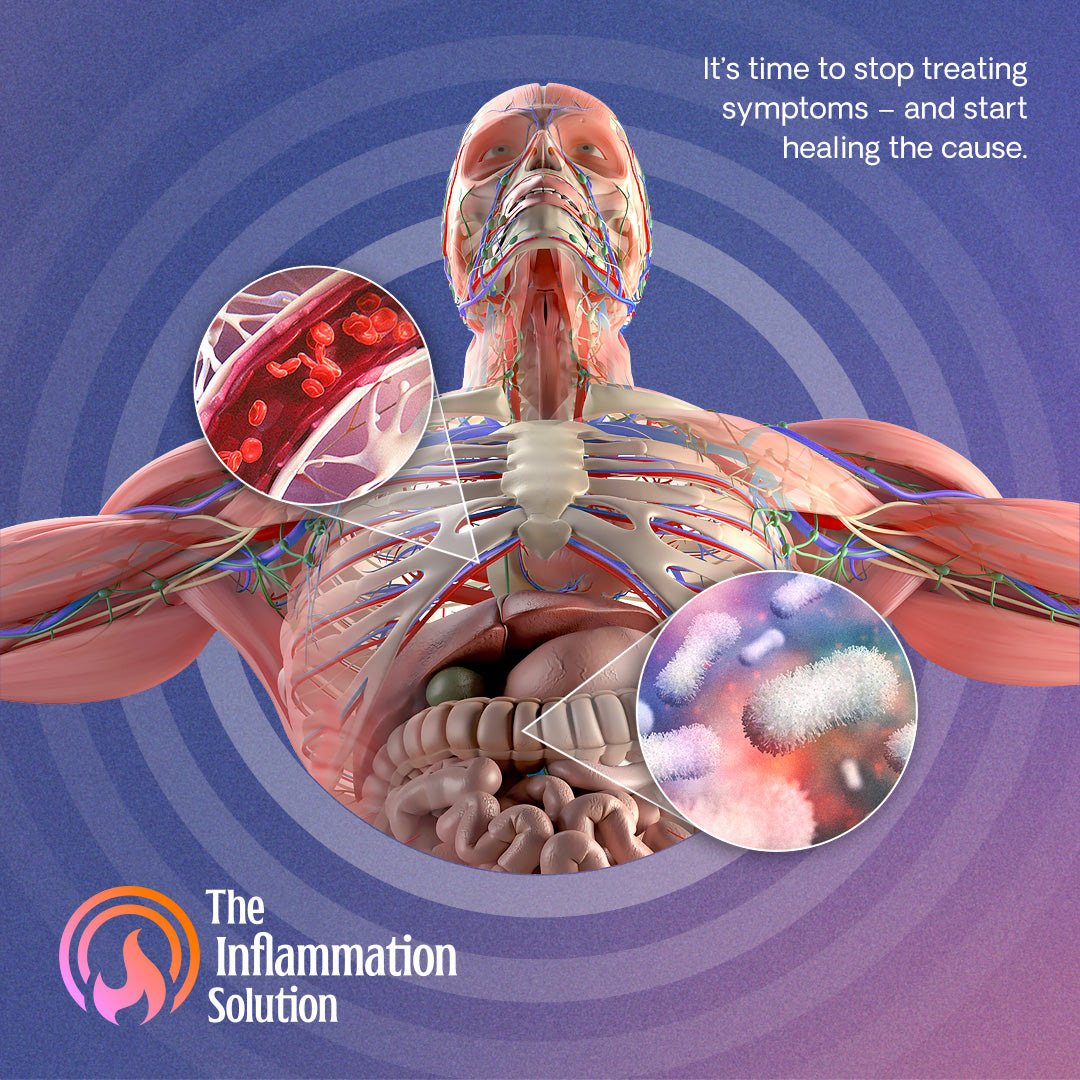

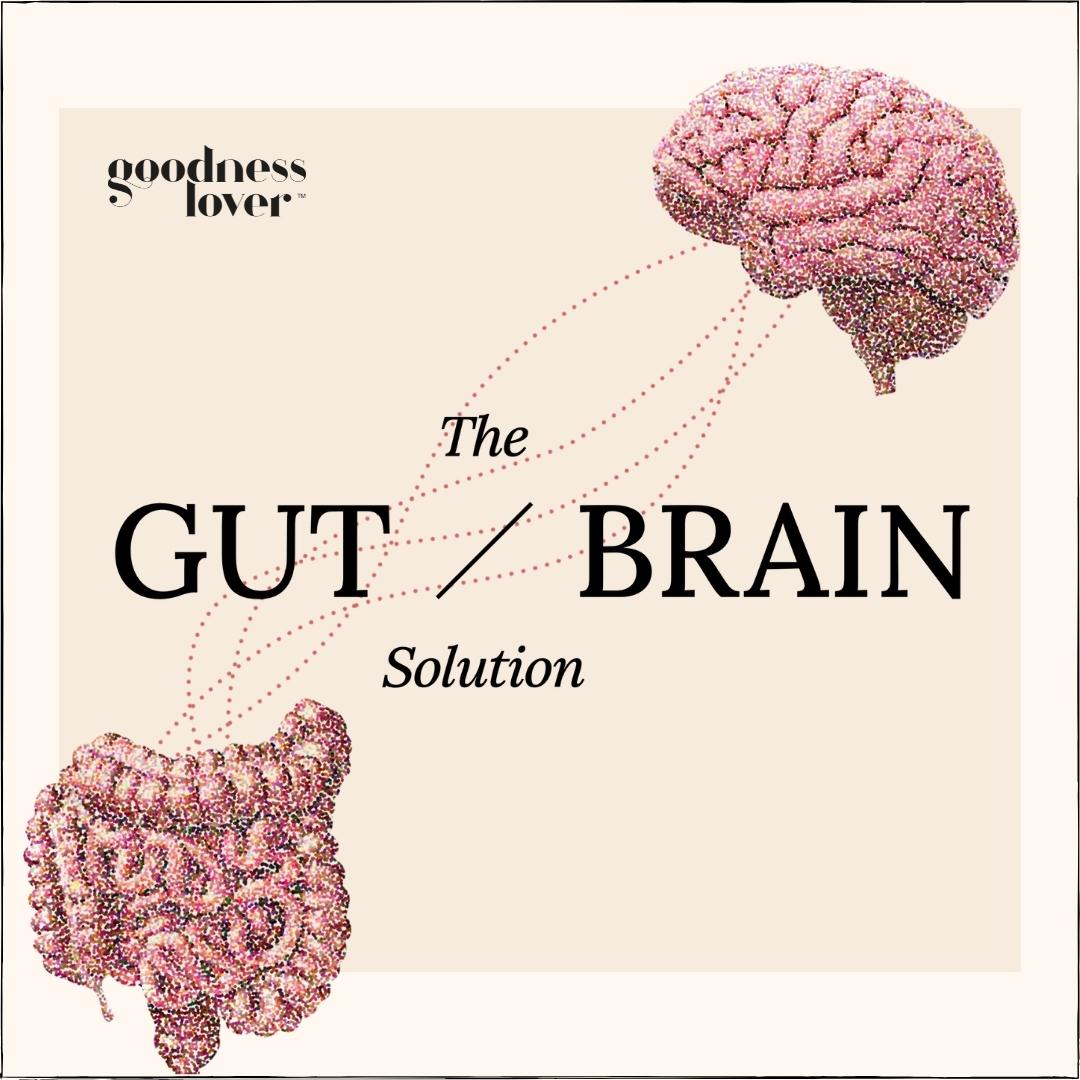

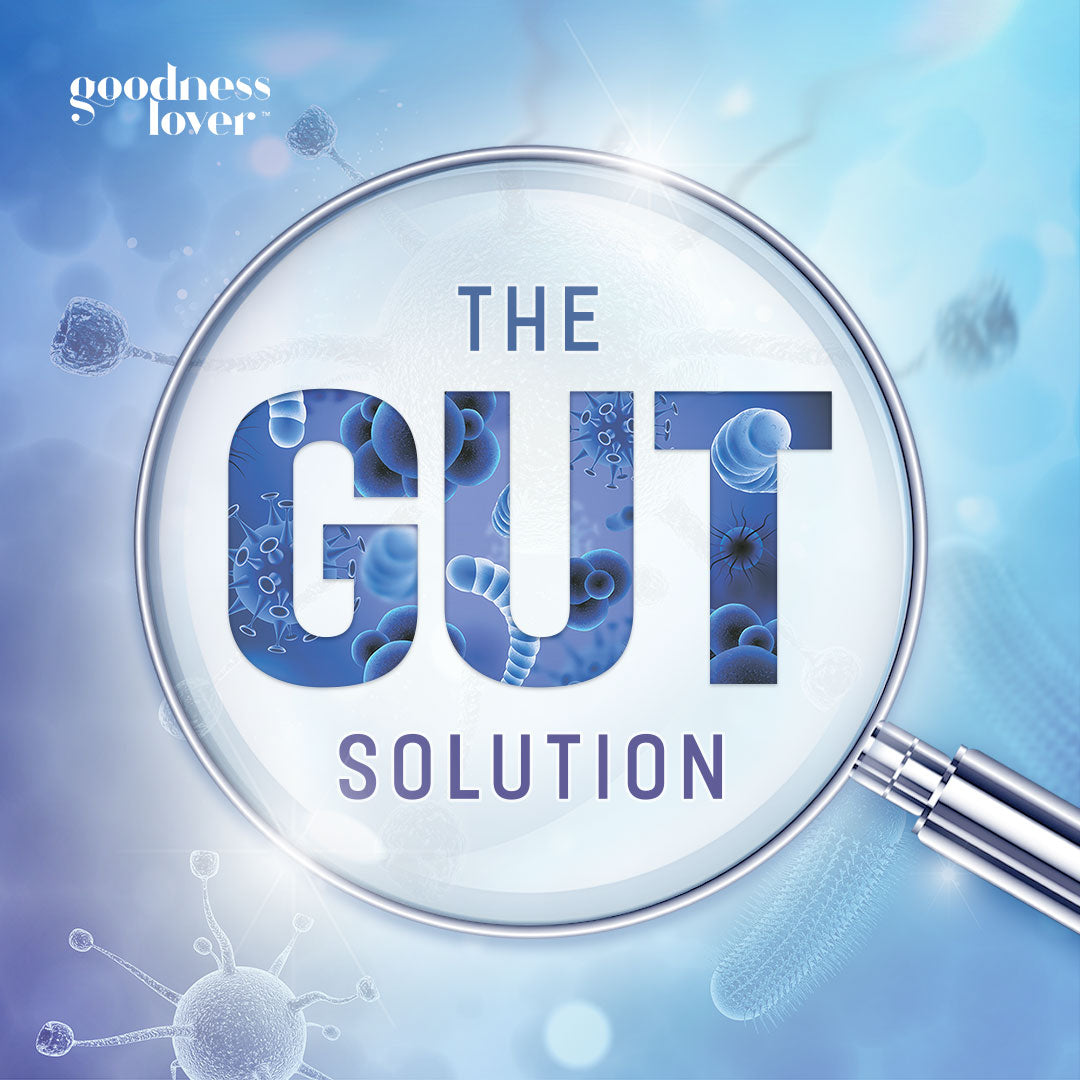
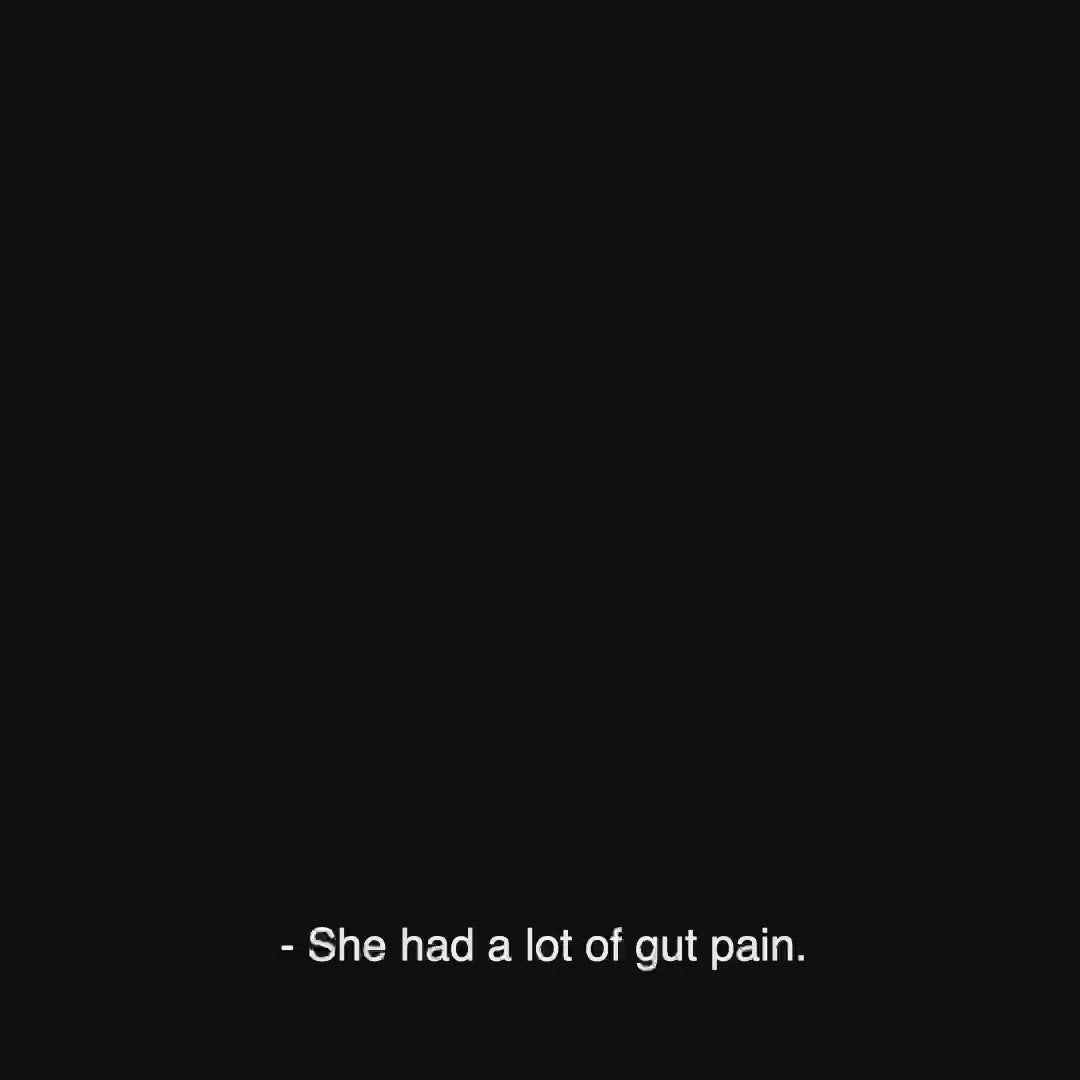
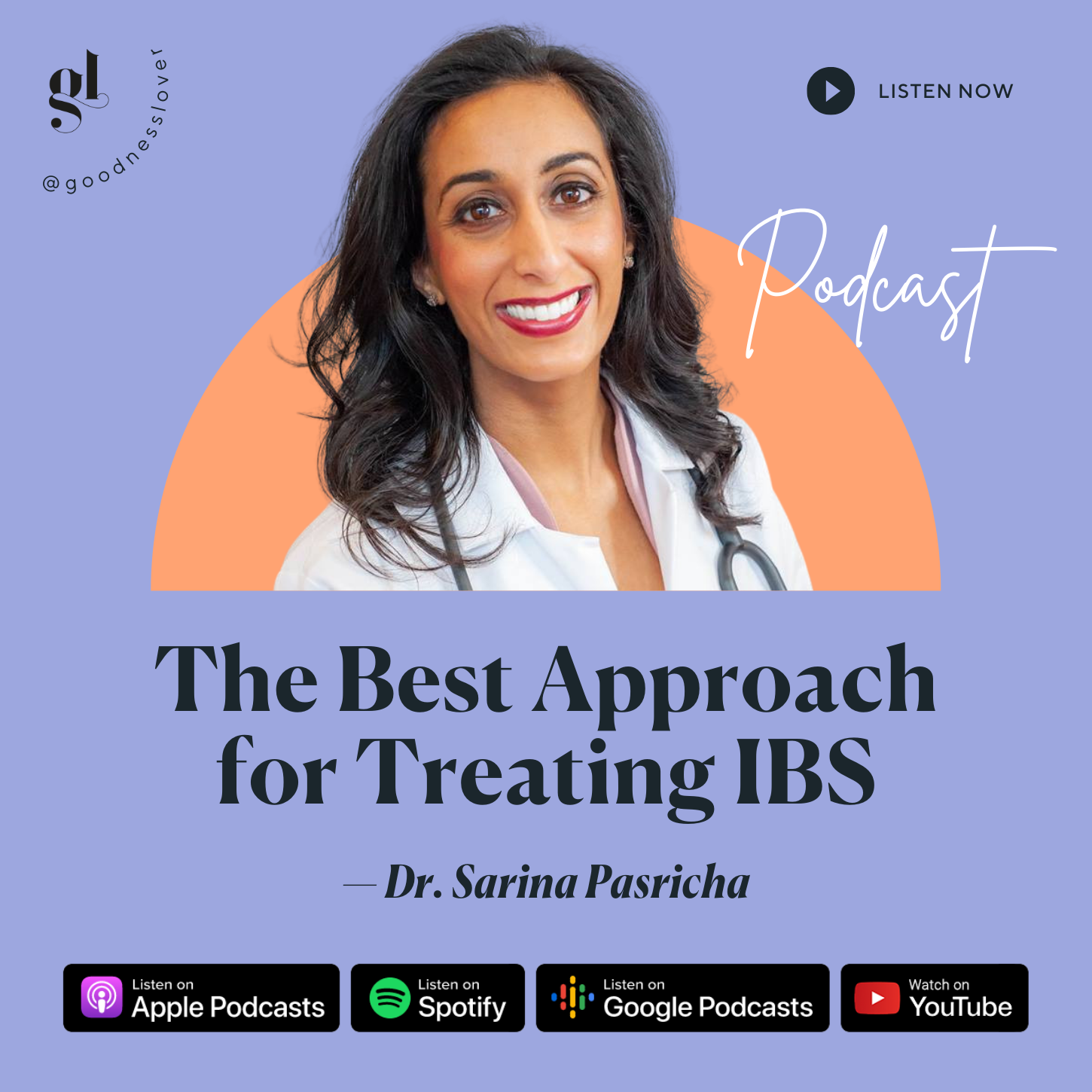

What Do You Think? Comment Below: